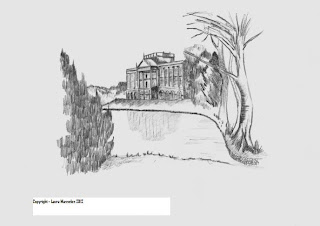"I am a monarch of God’s
creation, and you reptiles of the earth dare not oppose me."
-
Napoleon
addressing member’s of the Catholic clergy
The Second Empress is Michelle Moran’s fifth novel and
surrounds the little known story of the unlikely marriage between Napoleon
Bonaparte to his second wife, Princess Marie Louise of Austria, great-niece to
the unfortunate Marie Antoinette of France.
The story presents an insightful tale of the later reign of Napoleon
Bonaparte shortly after the discovery of his wife’s infertility and
unfaithfulness. With both his desire to produce a male heir and his even
greater desire to extend the French Empire, he chooses the unlikely bride, Princess
Marie-Louise of Austria, a tactic not only to ensure the submission of the
Austrian Empire but personally, to glorify himself marrying the great-niece of
Marie Antoinette, a real princess.
Princess Marie-Louise fearful that if she turned down Napoleon’s
hand her father would not only lose his crown but would destroy the Treaty of
Schonbrunn, she reluctantly accepts. Thrown into a world she is unfamiliar with,
she finds some comfort in an unlikely friend, the late Empress of France’s
daughter, Hortense.
The story alternates between three central characters;
Princess Marie-Louise, Napoleon’s sister Pauline Bonaparte and Paul Moreau, Pauline’s
Chamberlain. This helps in developing each character and gives us a further
understanding of the egotistical, narcissistic family the Bonaparte’s really
were, stopping at nothing to get what they wanted for their own personal
gratification regardless of whether they destroyed lives in the process.
Most novels surrounding Napoleon’s reign are about his political
and public genius who re-established a nation after the French Revolution left
France in a state of political and social unrest. Through sheer charisma, Napoleon
influenced a nation marching hundreds of thousands to their deaths; a flaw
which ultimately led to his downfall, yet after all this, Napoleon is forged
throughout history as a legend.
The Second Empress does nothing to glorify the achievements of
Napoleon, only briefly mentioning battles at Leipzig, Russia and Waterloo
although this wasn’t the author’s intention in any case. The Second Empress is
a novel about the strength and determination of Marie-Louise, Second Empress of
France and exposes the real character of Napoleon and his siblings, who were
quite extreme in many of their aspirations. Napoleon was barbaric and militant
minded, his idiosyncrasies, sexual appetite and little care for the female
person, believing that “Women are nothing but machines for producing children”
all adding to Moran’s realistic portrayal of Napoleon. Moran’s historical notes
point out that in her attempt to recreate Napoleon’s last six years of his
reign, many personal court letters were relied upon, small snippets of which, are
included in the novel providing a raw truthfulness to the story and the
characters.
After having fallen in love with Moran’s last novel Madame Tussaud, I had great expectations
reading this novel. And although it wasn’t quite as enthralling as its predecessor,
I very much enjoyed reading a novel which surrounded the little known protagonist,
Princess Marie-Louise of Austria who, in many ways treaded in her great-aunt’s
footsteps. It was an easy novel to read and the story flowed effortlessly,
combined with historical snippets from personal letters it made an excellent
period read and I wouldn’t hesitate to recommend this novel to anyone who
enjoys a good historical fiction, Moran never fails to disappoint.













































